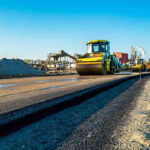Buying a powder coating machine for the first time is a mix of excitement and decision overload. With all the technical specs, glossy product photos, and sales talk, it’s easy to skip asking the questions that actually matter. Before pulling the trigger on that first machine, every buyer needs to dig deeper than surface-level features.
What Coating Thickness Accuracy Can the Oven Consistently Achieve?
Precision in coating thickness isn’t just a feature—it affects durability, finish quality, and customer satisfaction. The ability of a powder coating machine to hit consistent thickness targets, batch after batch, tells you everything about its reliability. If a machine can’t hold within a few microns of your spec, you’re risking wasted materials and rejected parts. For new users, checking what level of coating thickness control the oven offers, especially during repeat runs, can help avoid performance issues later on.
It’s also smart to ask whether the machine maintains accuracy across varying part sizes or metal types. Uniform application isn’t just about the gun or the powder; it’s heavily influenced by how evenly the curing oven holds its temperatures. Consistency across parts builds repeatability in your workflow, which saves both time and money in the long run.
Does the Oven’s Heat Distribution Support Uniform Cure Cycles?
A good finish depends on an even cure, and that only happens if the oven distributes heat properly. Uneven heat zones can lead to undercured or overcooked areas, both of which compromise coating performance. First-time buyers should dig into the airflow design of the machine. Does it have forced convection? Is there data showing how temperatures hold up across the entire space?
A walkthrough of heat mapping or sample curing charts can show just how uniform the heat is. If there are cold spots or inconsistent temperatures between shelves or racks, it could mean trouble. Investing in a powder coating machine that supports uniform heat delivery means your finished products will pass quality checks every time—and avoid unnecessary rework.
What Type of Energy Consumption Can We Expect Under Typical Operations?
Understanding energy use is key to predicting long-term costs. A powder coating machine may look efficient on paper, but how it performs during continuous use matters more. Does it require long warm-up times? Does the oven retain heat well between batches? A first-time buyer should ask for actual power draw data during a standard work cycle.
More advanced systems often come with energy-saving modes or zone heating, which lowers operational costs without compromising performance. If you’re planning to run the machine daily, knowing the monthly energy impact isn’t just a budget question—it can influence your facility’s electrical setup and utility planning.
Is the Machine Compatible with Multiple Powder Coating Formulations?
Some machines are designed to play nice only with specific brands or types of powders, which limits flexibility. If a shop plans to experiment with different finishes, textures, or hybrid formulas, compatibility is a must. A powder coating machine that handles polyester, epoxy, urethane, and custom blends without clogging or inconsistency helps new users get creative without being locked into one product line.
For first-timers, asking about the gun’s adjustability and powder feed system can reveal a lot about the machine’s versatility. A system that adjusts easily between powder types reduces downtime, especially in small-batch or custom coating operations.
Can the System Scale Easily With Increasing Production Demands?
A small operation today might be running large orders within a year. New buyers should think beyond day-one needs. Does the machine support modular upgrades? Can the oven capacity expand without replacing the entire system? Being able to grow with demand helps businesses avoid early equipment turnover.
It’s also worth considering how quickly additional booths or curing units can be integrated. A scalable powder coating machine saves money and hassle later, especially if the workflow needs to double or triple without sacrificing quality or speed.
What Are the Available Controls for Customizing Cure Profiles?
Not every job requires the same cure cycle, and some parts need unique timing or ramp-up adjustments. A good powder coating machine should include programmable settings for various temperatures and durations. Digital controls with memory presets make it easier for first-time users to repeat successful jobs without constant recalibration.
Some systems also offer real-time monitoring, which is useful for troubleshooting or training. A panel that gives readouts of current temps, airflow speed, and timing helps operators get comfortable faster—and reduce the chance of mistakes early on.
Does the Manufacturer Provide Comprehensive On-site Support and Training?
A high-quality powder coating machine means nothing without proper training. New buyers should always ask what kind of setup help and training is included. Is there on-site instruction for the operators? Are there video resources or follow-up support options?
Having a technician walk through the install and provide a live demo makes a world of difference. Beyond just setting the temperature, first-time users need to learn cleaning routines, powder handling best practices, and how to troubleshoot basic issues. Solid training turns a confusing first few weeks into a confident start.


